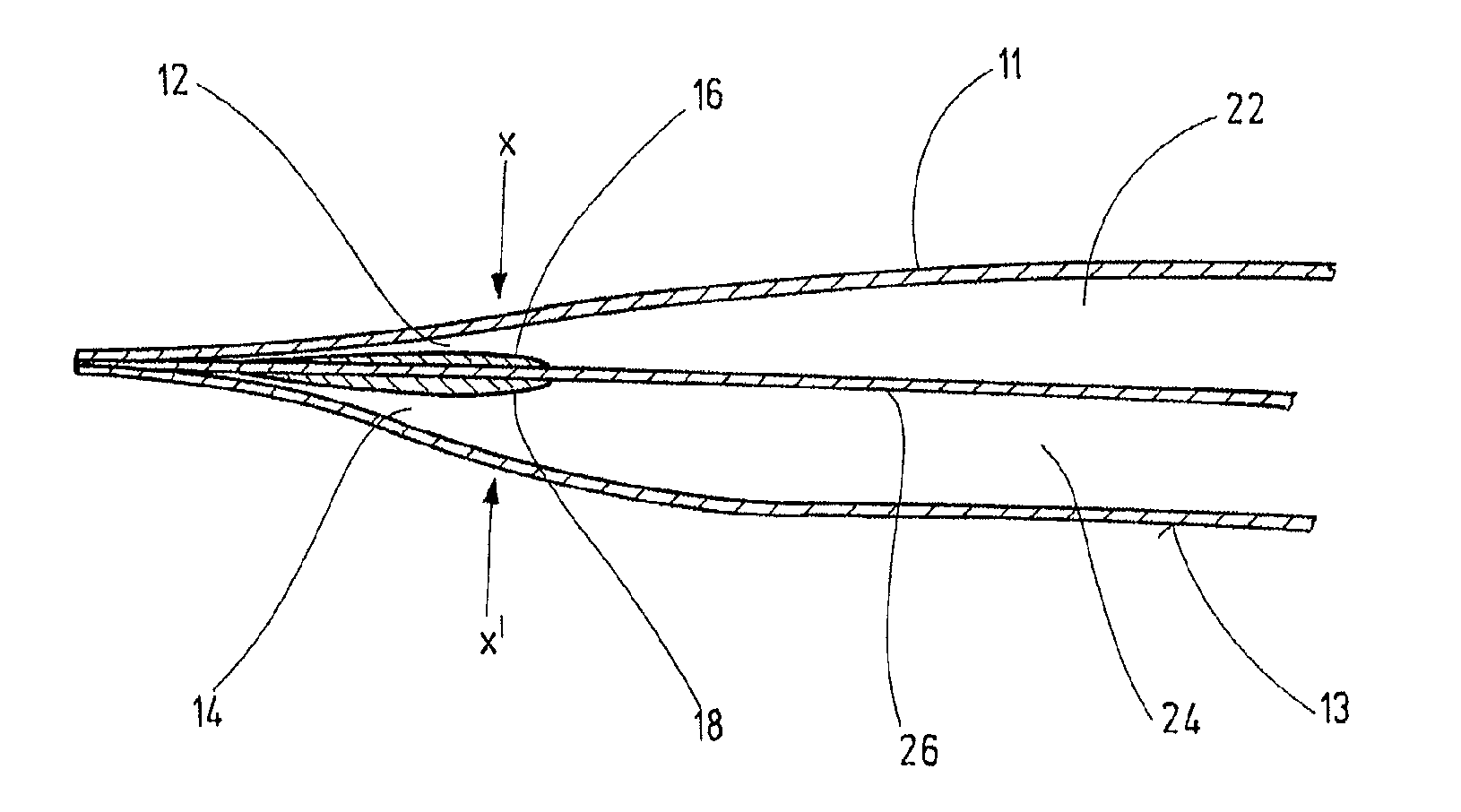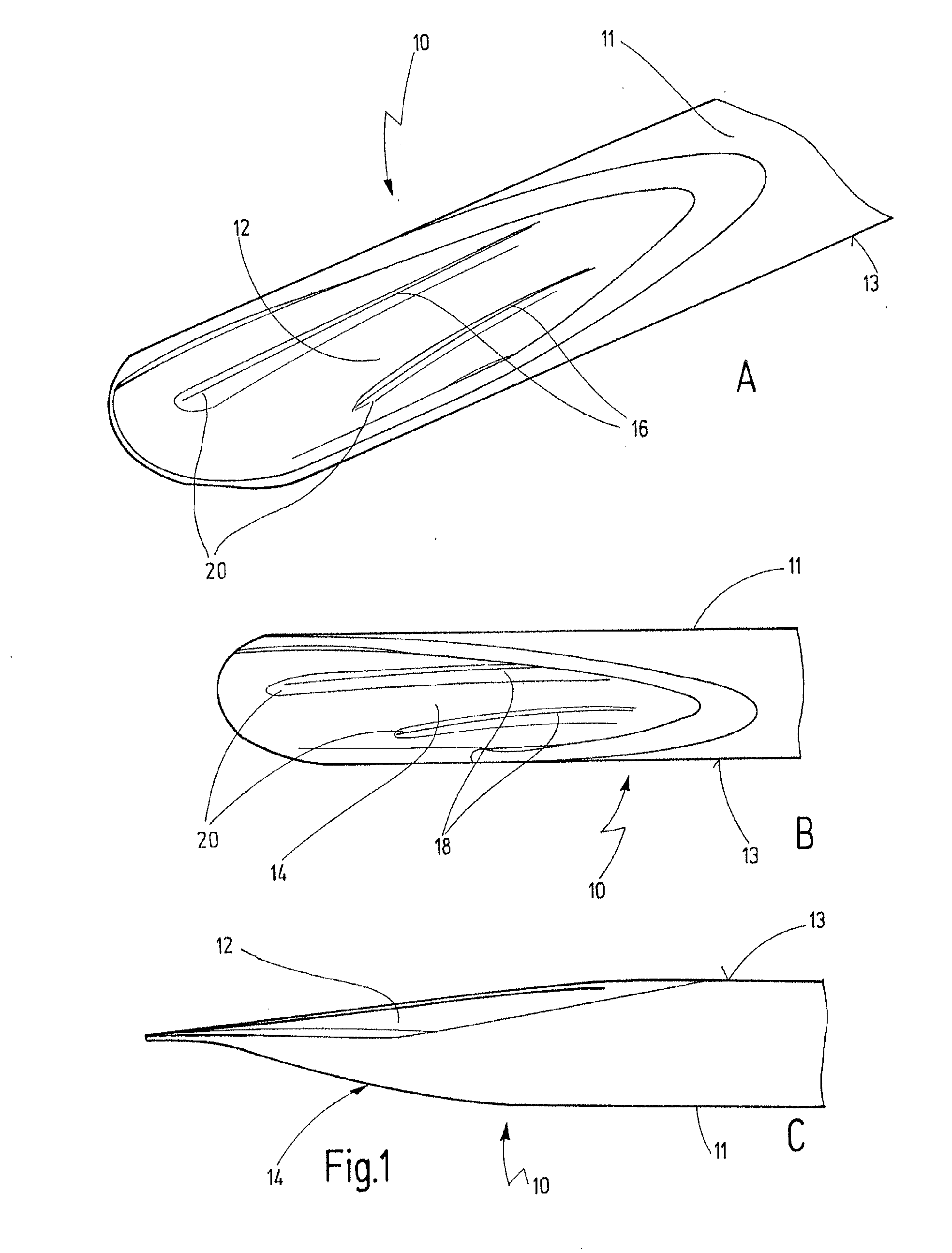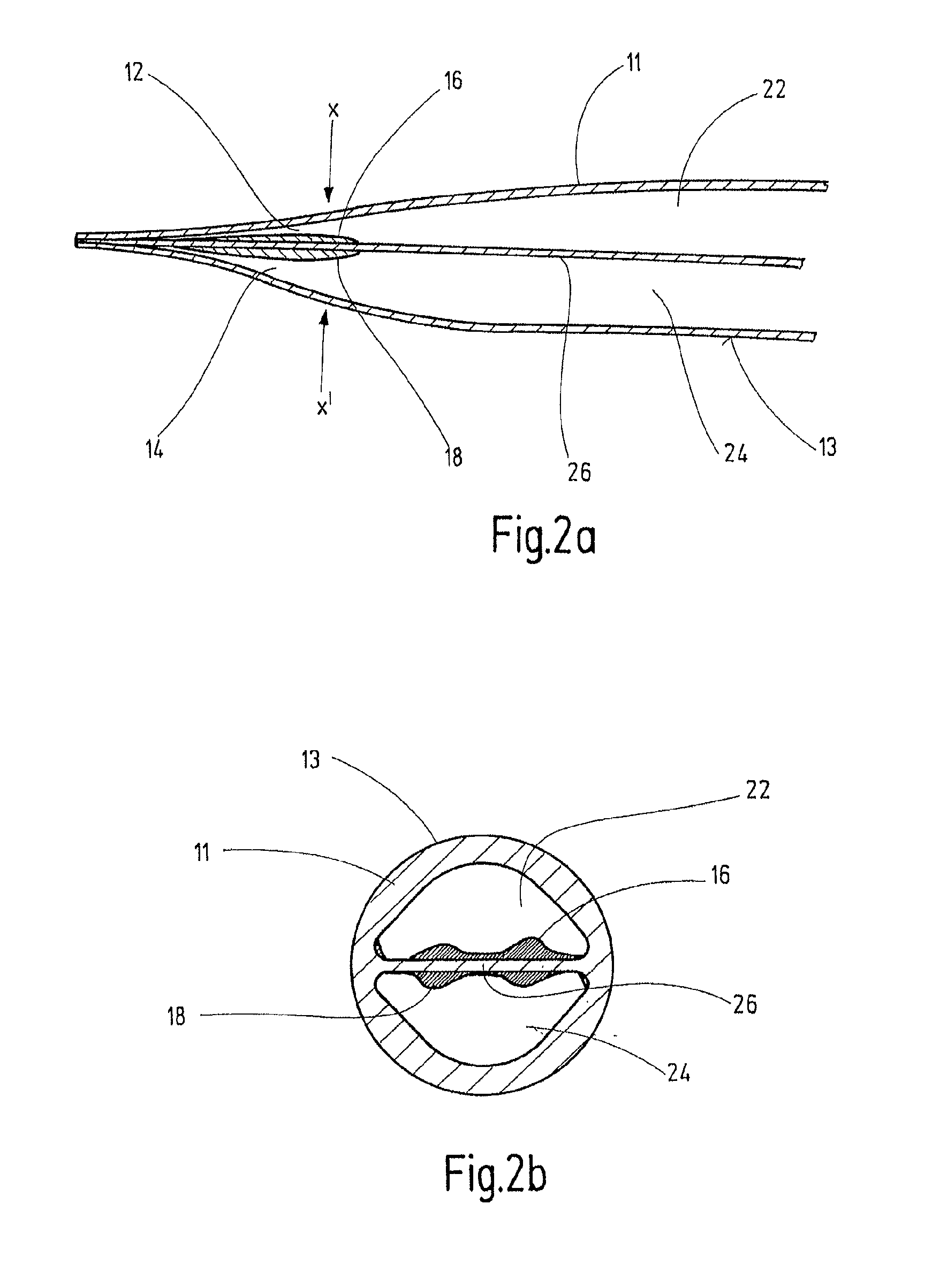Double lumen catheter
a catheter and lumen technology, applied in the field of double lumen catheters, can solve the problems of reducing the efficiency of blood treatment process, catheters made of relatively stiff materials, and unsuitable for long-term placemen
- Summary
- Abstract
- Description
- Claims
- Application Information
AI Technical Summary
Benefits of technology
Problems solved by technology
Method used
Image
Examples
Embodiment Construction
[0052]FIG. 1 shows the distal end of a double lumen catheter according to an embodiment of the invention, with its elongated tubular body 11 being depicted in part. In FIG. 1, a double lumen catheter tip 10 of an embodiment according to the invention is shown, with the opening of intake lumen 22 being designated as 12, as it is depicted in FIG. 1a, and the opening of return lumen 24 as 14, as it is depicted in FIG. 1b. The openings 12 and 14 are separated via a divider wall (not pictured in FIG. 1). FIG. 1c shows a side view of the tip 10, showing the openings 12 and 14 of both, the intake 22 and the return lumen 24. In the embodiment shown in FIG. 1, the tip 10 comprises ridges 16 and 18, extending in the area of the openings 12 and 14 of the intake 22 and the return lumen 24 and along a longitudinal portion of the tubular body. In the embodiment shown in FIG. 1, the distal ends 20 of the ridges 16 start to raise / incline in a certain, short distance from the very end of the tip. As...
PUM
 Login to View More
Login to View More Abstract
Description
Claims
Application Information
 Login to View More
Login to View More - R&D
- Intellectual Property
- Life Sciences
- Materials
- Tech Scout
- Unparalleled Data Quality
- Higher Quality Content
- 60% Fewer Hallucinations
Browse by: Latest US Patents, China's latest patents, Technical Efficacy Thesaurus, Application Domain, Technology Topic, Popular Technical Reports.
© 2025 PatSnap. All rights reserved.Legal|Privacy policy|Modern Slavery Act Transparency Statement|Sitemap|About US| Contact US: help@patsnap.com



